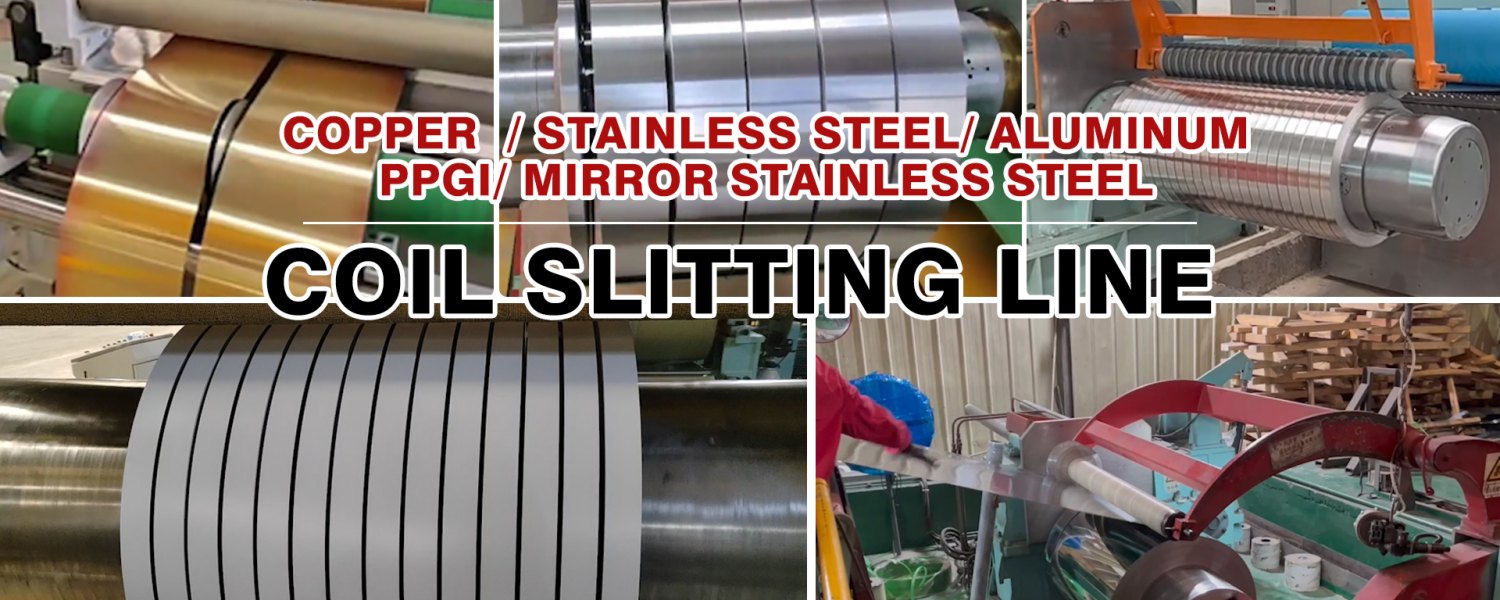"Steel slitting is a core metalworking process used to cut large coils of steel into narrow strips. This process requires not only specialized coil processing equipment—steel slitting lines—but also precise control and operation. Steel slitting has a wide range of applications, encompassing industries such as construction, automotive, electrical, and packaging. This article will explore steel slitting in detail."
Specific Applications of Steel Slitting Line
1. Steel slitting line in metalworking
In the metalworking industry, steel slitting enables automated slitting of metal sheets, pipes, and other materials, providing an efficient and precise processing solution. Steel slitting machines enable metal materials to be quickly and accurately cut to the desired size. This not only improves production efficiency, but also reduces labor costs and ensures process stability.
2. Steel slitting line in electronics industry
The electronics industry demands extremely high material precision. Steel slitting is primarily used in this sector for the stripping of electronic components and wires. Slitting technology helps manufacturers to quickly create narrow, custom-sized strips to satisfy the production requirements of electronic products. This high-precision slitting approach guarantees the reliability and performance of electronic components.
3. Steel slitting machine in electrical industry
Steel slitting is extensively used in the production of crucial parts like transformer cores, motor cores, and laminations in the electrical sector. Because they are simple to stack and assemble, the thin strips created by steel slitting are perfect for making these products. Excellent steel slitting lines guarantee consistent size and thickness throughout every strip, therefore enhancing the finished product's performance.
4. Steel slitting machine in construction industry
The construction industry is a key application area for steel slitting. Through the slitting process, steel can be manufactured into a variety of building materials, including roofing panels, wall panels, and ceiling panels. The efficient processing capabilities of steel slitting lines enable construction companies to quickly provide the required building materials to meet market demand. Slitting steel not only enhances the structural strength of buildings but also meets design requirements for aesthetics.
5. Steel slitting machine in automotive industry
The automotive sector has demanding standards for material strength and weight. Manufacturing of automotive components including door frames, chair frames, and fenders depends critically on steel slitting. Narrow strips created by steel slitting lines have amazing forming and welding characteristics that allow car manufacturers to lower vehicle weight without compromising safety, hence increasing fuel efficiency.
6. Steel slitting line in packaging industry
Steel slitting is employed in the packaging sector to slit packaging materials, therefore allowing tailored packaging solutions. Accurate slitting helps businesses satisfy several consumer needs by improving packaging appeal and efficiency. Modern steel slitting machine's great efficiency lets businesses rapidly react to client demands, therefore improving their competitive edge.
Why is Steel Slitting Important?
The importance of steel slitting is reflected in many aspects. Precision steel slitting, achieved through high-quality steel slitting machines, is an essential process.

1. High-precision slitting for steel slitting line
Modern steel slitting machines utilize sophisticated slitting technology, capable of achieving high-precision slitting within the millimeter range. This high precision ensures the quality of the slitting edges, reducing waste and errors in subsequent processing.
2. Fast slitting for steel slitting line
Automated operation and efficient slitting technology enable steel slitting machines to complete large volumes of slitting tasks in a short period of time. This high speed not only improves production efficiency but also effectively shortens delivery times.
3. Consistency & stability for steel slitting line
Automated processes ensure consistent and stable results for each slitting process. This consistency directly impacts product quality, reduces variability caused by human factors, and improves customer satisfaction.
4. Versatility for steel slitting machine
Modern steel slitting line are flexible and adaptable to match the slitting requirements of several materials. Steel slitting machine can quickly process and produce narrow strips fit for several customer projects whether it's steel, stainless steel, aluminum, copper, hot-rolled or cold-rolled metal.
5. Human-machine interface for steel slitting machine
Many steel slitting machines have a simple and user-friendly human-machine interface that makes operation easy and practical. This user-friendly design makes it possible for operators to quickly learn how to operate the slitting process, hence lowering training expenses and raising productivity efficiency.
Specific Steps in the Steel Slitting Line Process
The steel slitting machine process typically involves several key steps, each of which is crucial to ensuring the quality of the final product.
1. Coil loading for steel slitting line
First, the steel coil is loaded into the decoiler. Typically, the coil is unwound by a motorized system and fed into the steel slitting line. The smooth execution of this step is essential for subsequent processing.
2. Slitting for steel slitting machine
The steel coil travels via a slitting head throughout the slitting process, where a set of revolving circular blades cut the coil into thinner strips. The width of the ultimate strip is set by the number of blades and their distance apart. Achieving the target width calls for accurate tooling between the blades.
3. Rewinding for steel slitting line
The slit steel coil is secured to a recoiler, which rotates and removes the coil from the slitting head, producing a newly slit coil. This step also requires stringent control to ensure that the rewound steel strip is neat and defect-free.
4. Quality control
Throughout the whole process, quality control procedures are vital. To guarantee it complies with the stated requirements, the final product is carefully examined. This involves testing the steel for strength and longevity, checking for surface flaws, and measuring the width and thickness of the strip.
If you need more information about steel slitting machines or are looking for solutions for efficient production and precise slitting, KINGREAL SLITTING, a steel slitting machine manufacturer with over 20 years of experience, is your best choice. Feel free to contact KINGREAL SLITTING for personalized steel slitting line manufacturing solutions.

